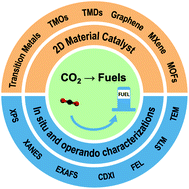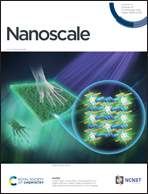Two-dimensional materials for electrochemical CO2 reduction: materials, in situ/operando characterizations, and perspective
Abstract
Electrochemical CO2 reduction (CO2 ECR) is an efficient approach to achieving eco-friendly energy generation and environmental sustainability. This approach is capable of lowering the CO2 greenhouse gas concentration in the atmosphere while producing various valuable fuels and products. For catalytic CO2 ECR, two-dimensional (2D) materials stand as promising catalyst candidates due to their superior electrical conductivity, abundant dangling bonds, and tremendous amounts of surface active sites. On the other hand, the investigations on fundamental reaction mechanisms in CO2 ECR are highly demanded but usually require advanced in situ and operando multimodal characterizations. This review summarizes recent advances in the development, engineering, and structure–activity relationships of 2D materials for CO2 ECR. Furthermore, we overview state-of-the-art in situ and operando characterization techniques, which are used to investigate the catalytic reaction mechanisms with the spatial resolution from the micron-scale to the atomic scale, and with the temporal resolution from femtoseconds to seconds. Finally, we conclude this review by outlining challenges and opportunities for future development in this field.

- This article is part of the themed collections: Nanoscale 2022 Emerging Investigators and Recent Review Articles


 Please wait while we load your content...
Please wait while we load your content...